 Let’s look at a 16th-century Italian-style dress and hairdo. The outfit is modern, but it’s a rather accurate replica of garments depicted in a 16th-century book by Cesare Vecellio. We’d like to show you the process of dressing in a 1500s costume and teach you how to make a period-accurate hairstyle. Sometimes, tiny details determine the period – like where the braids are pinned around the head or how the sleeves are tied/sewn to the bodice. If you want to make a good replica of the 16th-century dress for a party or medieval arts fair, pay attention to details.
Let’s look at a 16th-century Italian-style dress and hairdo. The outfit is modern, but it’s a rather accurate replica of garments depicted in a 16th-century book by Cesare Vecellio. We’d like to show you the process of dressing in a 1500s costume and teach you how to make a period-accurate hairstyle. Sometimes, tiny details determine the period – like where the braids are pinned around the head or how the sleeves are tied/sewn to the bodice. If you want to make a good replica of the 16th-century dress for a party or medieval arts fair, pay attention to details.
This article is based on a video made by Morgan Donner, historical costumer.
First, goes a camiseta or chemise or shift. The 16th-century Italian-style shifts have a really beautiful pleating that's bound up with a nice narrow bit of trim. And it's very pretty, very fine and delicate.
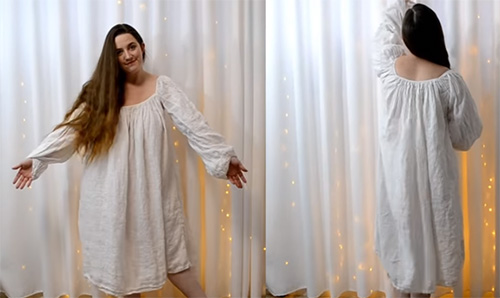
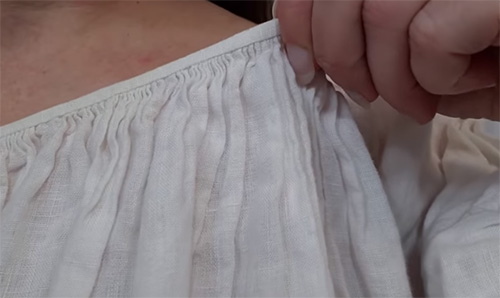
Next up, we have a bit of hosery – some handmade socks. These are made of a really nice warm wool.
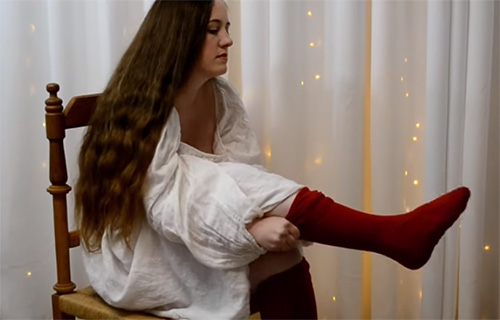
To help keep the socks up, green linen woven trim is used in this case. They act as garters.
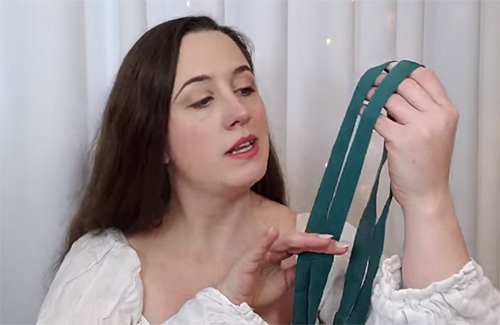
Since women would go out into the cold, they wore underpants. Actually, there isn't a lot of documentation for underpinnings in the 16th century, but Italy is one of the places that does have extant and pictorial documented evidence of it.
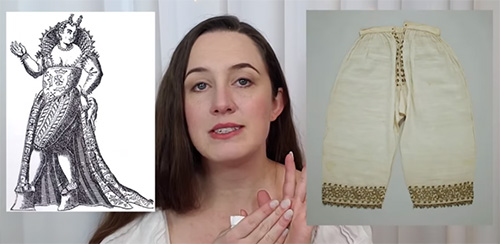
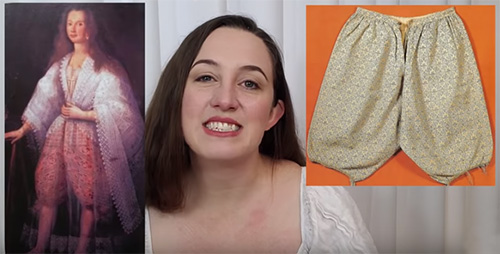
And to cover the neck and breasts, let’s wear a very modestly ruffled partlet. Partlets are really lovely as a way to keep the sun off of the exposed skin at the top of the shift. The dress itself does not cover that area. It's also nice for the cold weather because that little extra layer of fabric is nice.
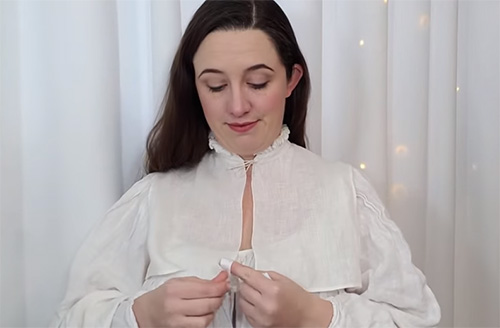
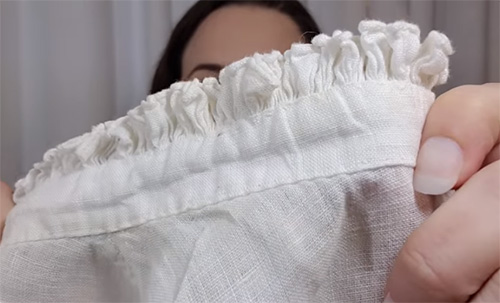
The partlet can be pinned to the chemise at the shoulder to avoid shifting and exposing skin.
The underpinnings are done and it's time for the overdress itself.
This one is made of wool and is moderately heavy.
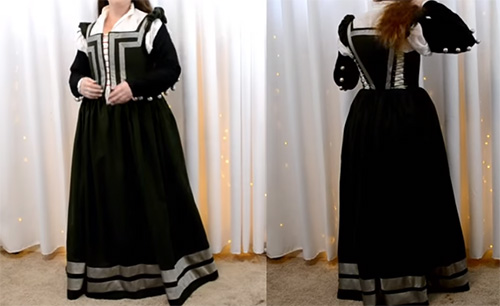
In the 16th century, noblewomen had maids to help them dress in all these layers of garments.
You might notice that the sleeves are tied into place rather than being sewn. The advantage of that is that you can take them off completely if it's really hot or switch them out for when you just want different colored sleeves to go with a certain outfit.
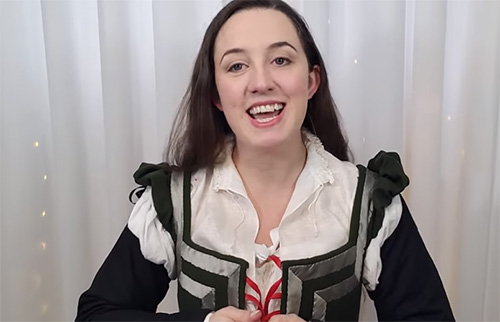
And now, lacing the bodice tight.
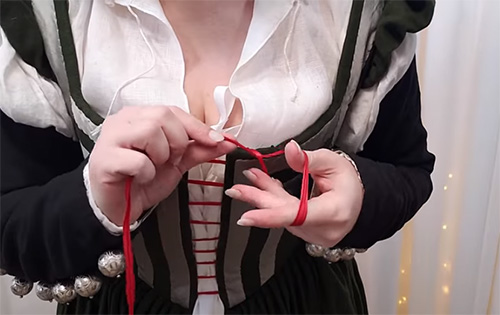
The excess ribbon gets tucked into the bodice.
Adjust everything to feel comfortable and look tidy.
This particular dress and these funny-looking sleeves are actually based on the illustration from the 16th-century book by Cesare Vecellio, where he covers fashion from all over his world, including Italy.
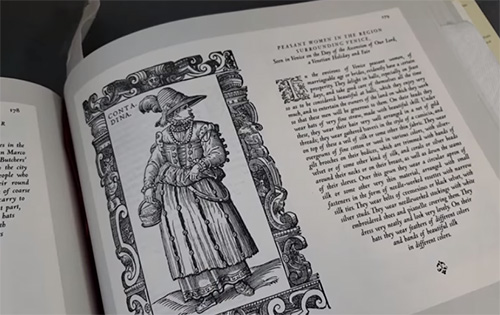
The author writes that women wore coral or silver beads around their necks, as well as on their breasts, as well as down the seams of their sleeves.
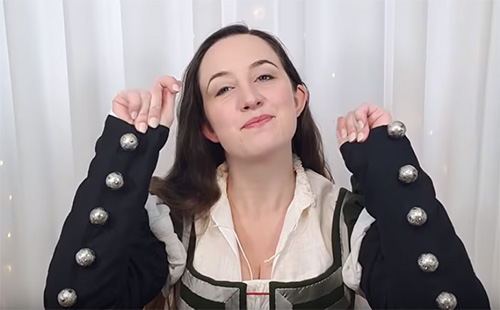
Now, it’s time for the hair. It is center-parted. The front strands are twisted to resemble braiding (but it is much easier than to braid) and then the hair is braided as usual all the way down. After that, the braids are pinned around the head, resembling a crown. But remember that the braids had to be at the back of the head, at the nape. Fake braids were often used to add some height and thickness to the hairdo.
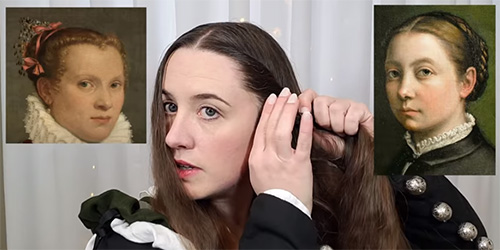
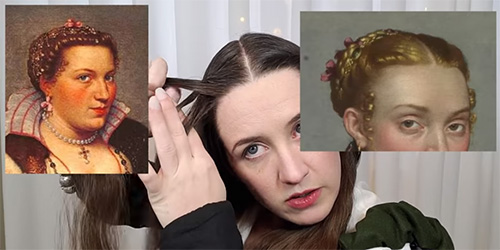
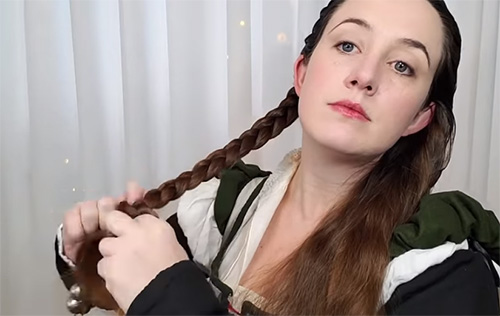
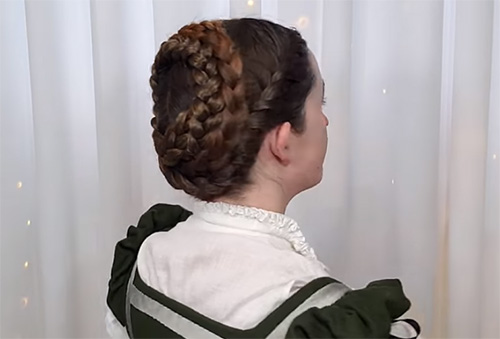
Another interesting thing about that period’s hairstyles is the Italian 16th-century hair taping. With a ribbon or tape, you lace it around your braids, catching a little bit of scalp hair as you go. To start off, take the tape, which is about 75 inches long, and make sure you have enough for both sides and can evenly do the whole thing. So, divide it in half, to begin with, and put the tape around your braids, first one end of the tape and then the other.
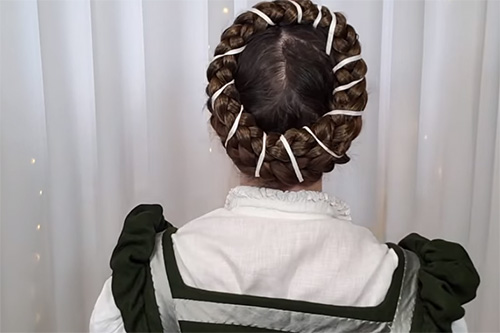
And tie a little bow at the top of your braiding.
And now, some finishing touches. Women of that era liked coral bead necklaces.
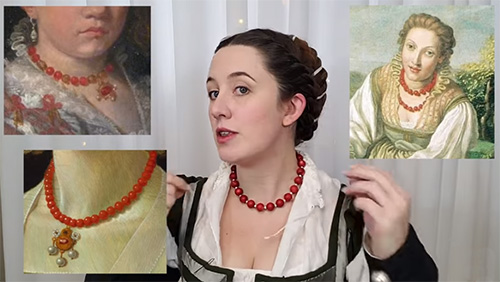
Also, pearl earrings.
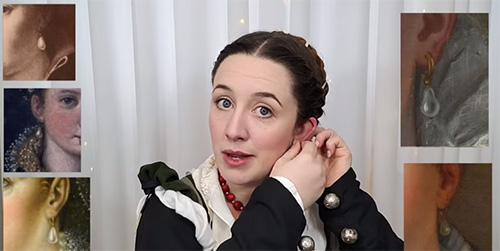
And a few more small accessories. Like a little pouch tied about the waist.
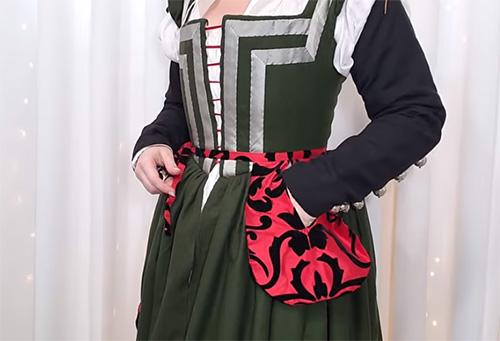
A pretty apron with some trim that is meant to be imitating the style of the hand-embroidered late 16th-century aprons.
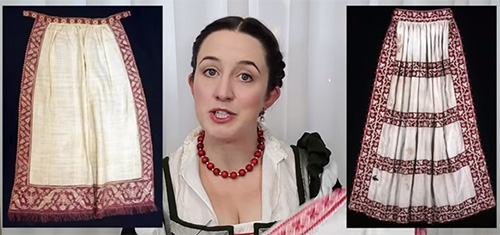
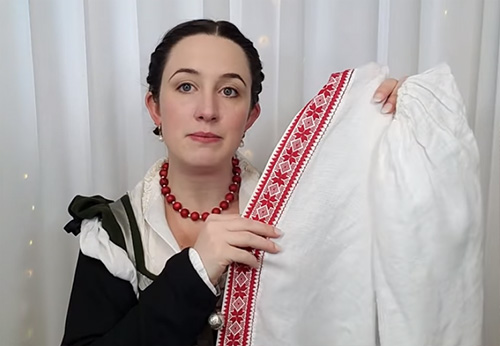

Another common accessory of 16th-century women both upper and lower class is a veil of some kind. Sometimes, the veil covered the whole head and face, and women were peeking out from their veils. Or they just pinned it delicately about the back of their heads, which is definitely a very pretty look.
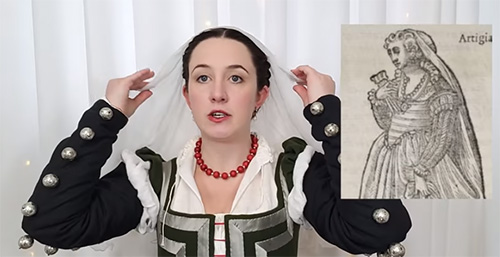

That’s it. The woman is ready to go out.
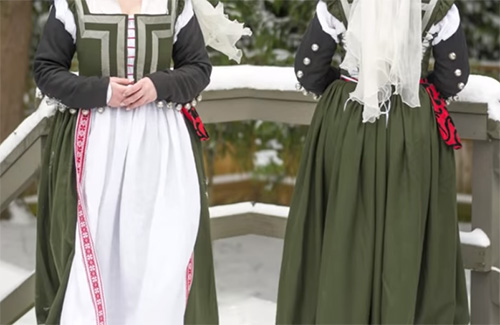
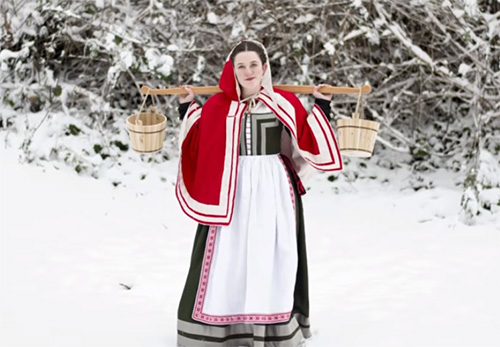

(c)


